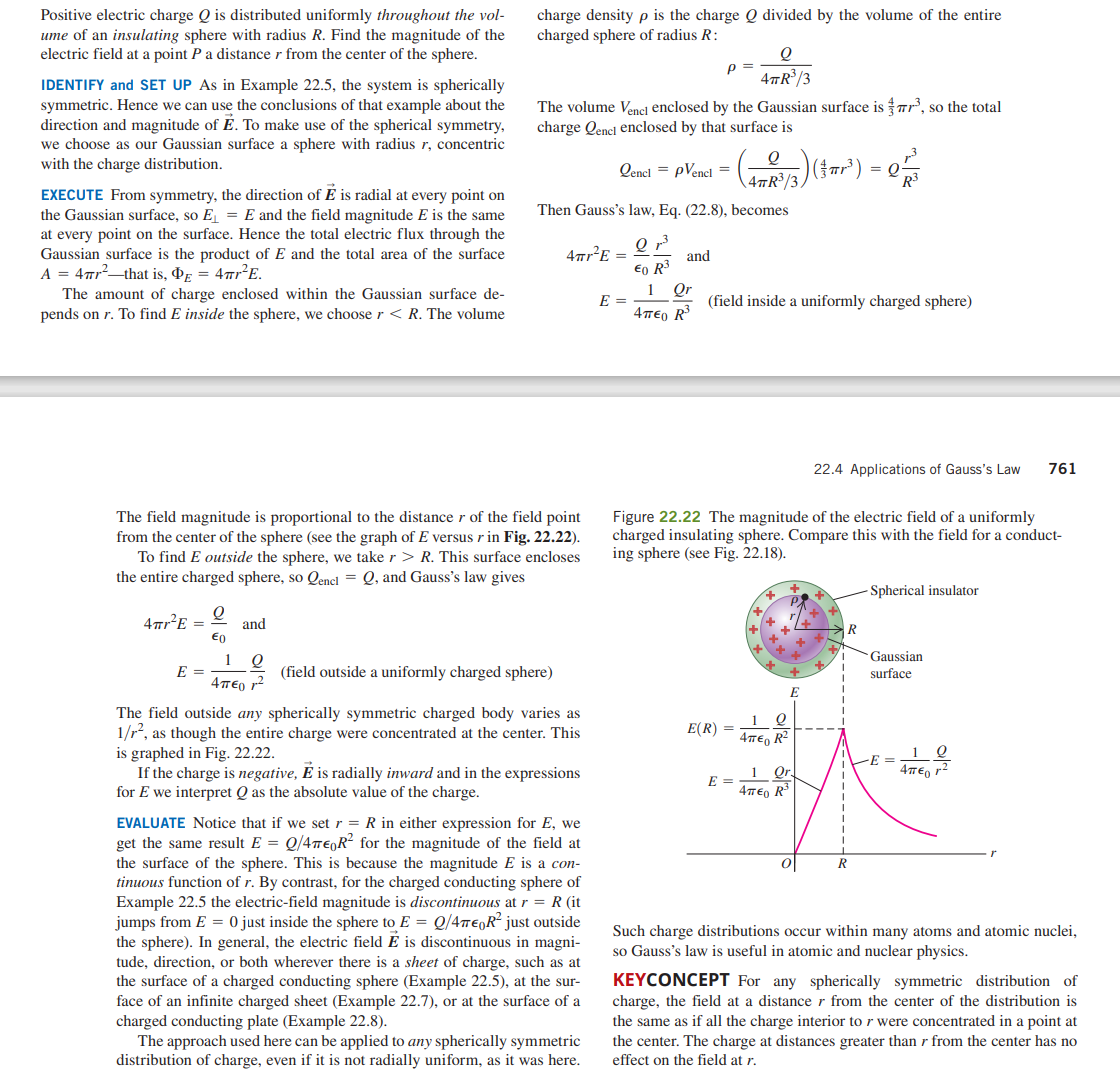Answered step by step
Verified Expert Solution
Question
1 Approved Answer
The field magnitude is proportional to the distance r of the field point from the center of the sphere ( see the graph of E
The field magnitude is proportional to the distance of the field point
from the center of the sphere see the graph of versus in Fig.
To find outside the sphere, we take This surface encloses
the entire charged sphere, so and Gauss's law gives
and
outside a uniformly charged sphere
The field outside any spherically symmetric charged body varies as
as though the entire charge were concentrated at the center. This
is graphed in Fig.
If the charge is negative, vec is radially inward and in the expressions
for we interpret as the absolute value of the charge.
EVALUATE Notice that if we set in either expression for we
get the same result for the magnitude of the field at
the surface of the sphere. This is because the magnitude is a con
tinuous function of By contrast, for the charged conducting sphere of
Example the electricfield magnitude is discontinuous at it
jumps from just inside the sphere to just outside
the sphere In general, the electric field vec is discontinuous in magni
tude, direction, or both wherever there is a sheet of charge, such as at
the surface of a charged conducting sphere Example at the sur
face of an infinite charged sheet Example or at the surface of a
charged conducting plate Example
The approach used here can be applied to any spherically symmetric
distribution of charge, even if it is not radially uniform, as it was here.
Figure The magnitude of the electric field of a uniformly
charged insulating sphere. Compare this with the field for a conduct
ing sphere see Fig.
Such charge distributions occur within many atoms and atomic nuclei,
so Gauss's law is useful in atomic and nuclear physics.
KEYCONCEPT For any spherically symmetric distribution of
charge, the field at a distance from the center of the distribution is
the same as if all the charge interior to were concentrated in a point at
the center. The charge at distances greater than from the center has no
effect on the field at

Step by Step Solution
There are 3 Steps involved in it
Step: 1

Get Instant Access to Expert-Tailored Solutions
See step-by-step solutions with expert insights and AI powered tools for academic success
Step: 2

Step: 3

Ace Your Homework with AI
Get the answers you need in no time with our AI-driven, step-by-step assistance
Get Started


